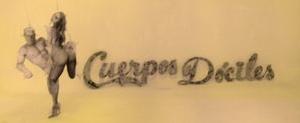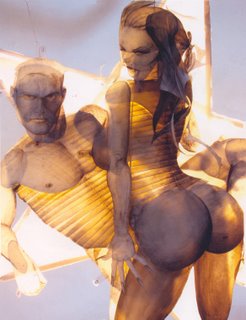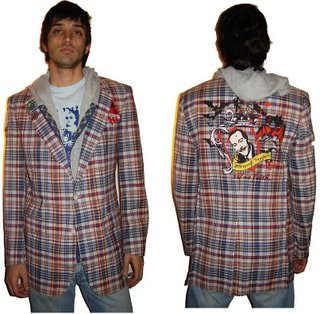
Cuerpos Dóciles
The birth of the discipline, of the art of the body, forms a connection which in the same mechanism, makes so much more obedient at the most useful, and the other way around. The discipline makes thus submissive and exercised bodies, “docile or obedient” bodies. The discipline increases the forces of the body (in utility terms) and diminishes those forces (in political terms of obedience) dissociating the power of the body. The docile bodies are the bodies molded with the disciplinary authority. The disciplinary authority of the modern times inaugurates a quiet punishment that operates with the purpose of producing domesticated bodies. This story is extracted of the text of Michel Foucault “Docile Bodies”.
“Cuerpos Dóciles” are a series of movable drawings produced by the plastic artist Sergio Lamanna based on the text of Foucault. The artist makes facilities in different spaces so that the people can manipulate them. The interaction is registered in video. A phrase of the artist summarizes this project “When the man does not repress by other men is an erotic beast”.
Here a videoclip made for the band of Punk Attaque 77 and a video made from the interaction between the people and the drawings.


Cuerpos Dóciles
El nacimiento de la disciplina, del arte del cuerpo, forma un vínculo que en el mismo mecanismo, lo hace tanto más obediente cuanto más útil, y al revés. La disciplina fabrica así cuerpos sometidos y ejercitados, cuerpos "dóciles". La disciplina aumenta las fuerzas del cuerpo (en términos de utilidad) y disminuye esas fuerzas (en términos políticos de obediencia) disociando el poder del cuerpo. Los cuerpos dóciles son los cuerpos moldeados con el poder disciplinario. El poder disciplinario de los tiempos modernos inaugura un castigo silencioso que opera con la finalidad de producir cuerpos domesticados. Este relato es extraído del texto de Michel Foucault, “Cuerpos Dóciles”. Sergio Lamanna basados en el texto homónimo.
El artista realiza instalaciones en diferentes espacios para que las personas puedan manipularlos. A partir de eso se registra la interacción en video. Una frase del artista resume este proyecto “Cuando no se lo reprime el hombre es una bestia erótica”.
Aquí pueden verse un video clip realizado para la banda de Punk Attaque 77 y un video realizado a partir de la interacción entre las personas y los dibujos.

Attaque 77 VideoClip
Cuerpos Dóciles Video





